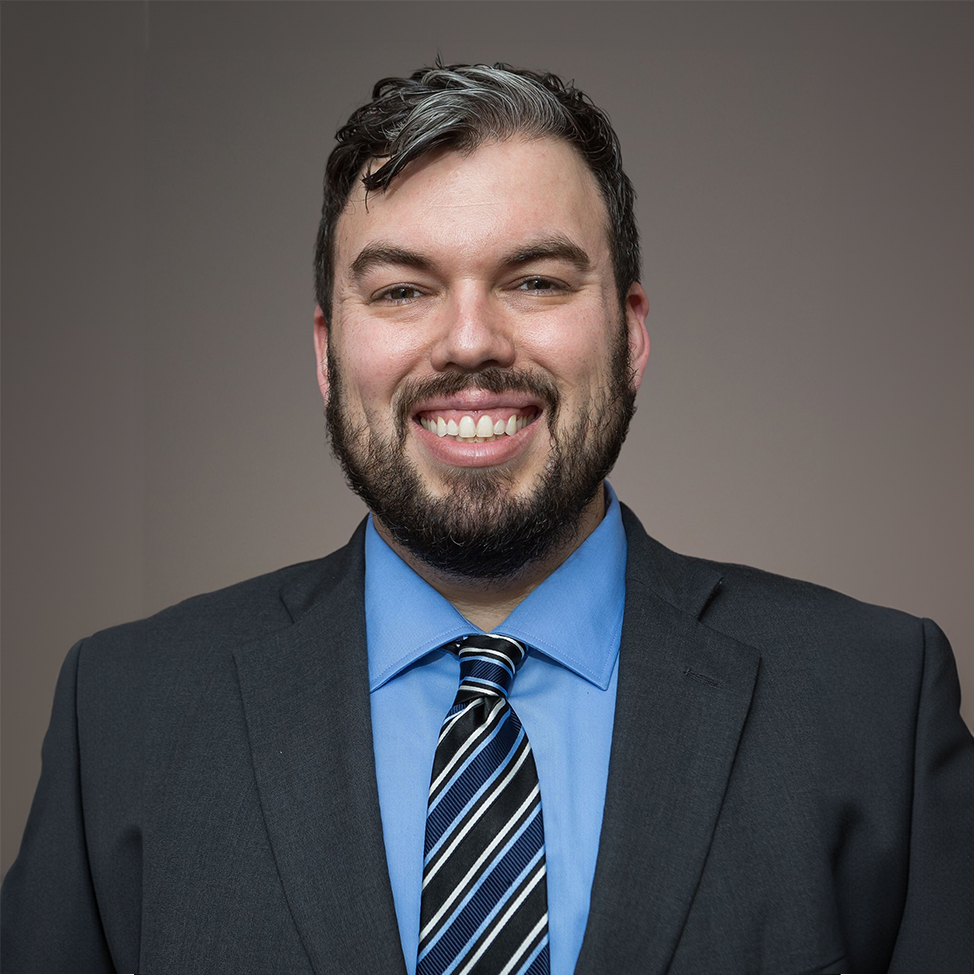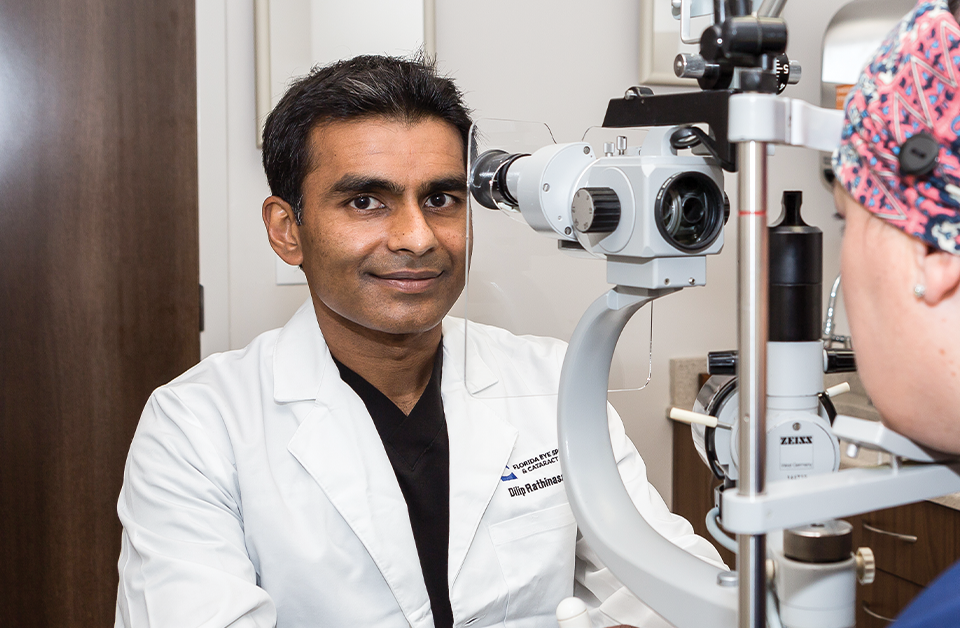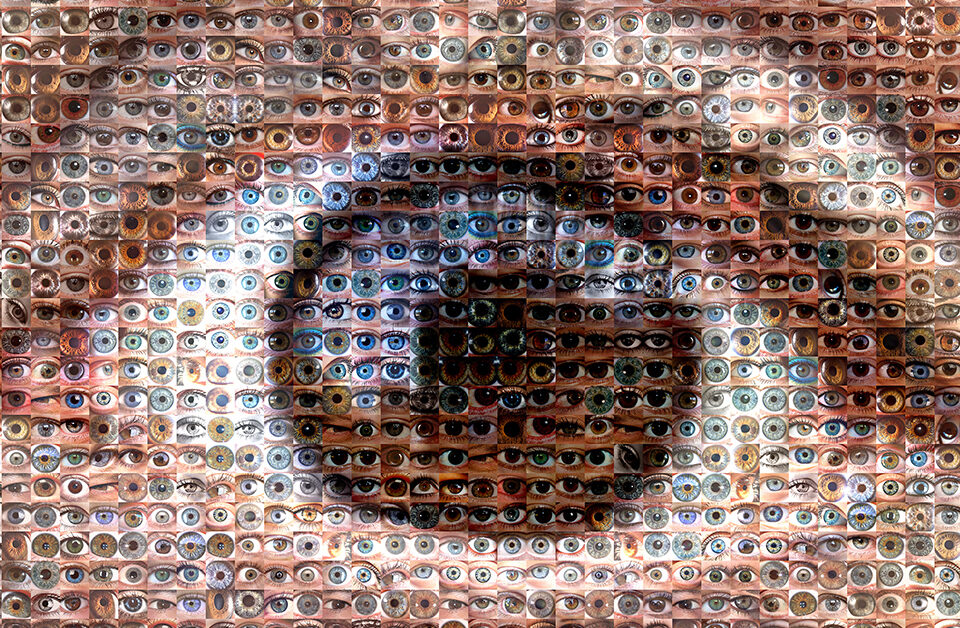

The world is an enchanting place when viewed through the eyes of a child. Children delight in nature and embrace family. They learn about these entities primarily through what they see.
When children suffer a vision disorder, they require the services of a fellowship-trained pediatric ophthalmologist such as Michael A. Lopez, MD, who recently joined the team at Florida Eye Specialists & Cataract Institute. Dr. Lopez is highly qualified to treat the region’s pediatric patients.
“My family is from Tampa; my mom and dad both grew up here,” Dr. Lopez shares. “I grew up in the Florida Panhandle and Louisiana. I went to undergraduate school at the University of Miami, then attended medical school in Tampa at the University of South Florida.
“I completed a pediatrics internship at Johns Hopkins All Children’s Hospital in St. Petersburg and later completed an ophthalmology residency at USF. For my pediatric ophthalmology fellowship, I ended up at Texas Children’s Hospital at Houston’s Baylor College of Medicine.”
Pediatric ophthalmologists manage and treat nearly all ocular diseases in children. Their services include general ophthalmology and most pediatric surgeries.
“We receive most of our referrals from pediatricians and optometrists who treat children and determine that they require more specialized care,” Dr. Lopez says of pediatric ophthalmologists. “We fit children with glasses, manage alignment issues and perform surgery, including cataract, eyelid, tear duct and eye realignment surgery.
“We handle just about all pediatric eye issues except for some very rare problems that require retinal or corneal surgery. In those cases, we refer patients to the institute’s retina and cornea specialists because those treatments are more advanced than those provided by a general pediatric ophthalmologist.”
Cataracts, which are a natural clouding of the lens, typically develop in people ages 55 and older. However, about one in 250 Americans are born with cataracts or develop them during childhood.
“When children have cataracts, we perform cataract surgery similar to that done on adults,” Dr. Lopez informs. “The surgery on children is a much longer and riskier procedure, however, so we only perform it when the cataracts are significant. Not every child with cataracts requires surgery.”
Dr. Lopez and his fellow pediatric ophthalmologists at the institute, Ronni M. Chen, MD, and G.S. “Jack” Guggino, MD, sometimes need to treat youngsters who cannot sit for a typical eye exam. These doctors have special skills and equipment to gather the information needed to make a diagnosis and prepare a treatment plan.
“Many young children cannot sit in or are afraid of the machines we use on adults, so we are less reliant on imaging and microscopes,” Dr. Lopez elaborates. “Many of our machines have handheld versions that we can use on children. They are not as exact as the stand-alone equipment, but we make it work.
“When children are unable to take a vision test verbally, we use a device called a retina scope that allows us to take accurate measurements similar to how a tabletop machine takes an adult’s measurements. Then we can determine if the child needs glasses.”
Common Conditions
Among the common conditions treated by Dr. Lopez and his colleagues is strabismus, also known as eye crossing or eye drifting. With this condition, the eyes do not line up with each other.
“Sometimes, we can correct strabismus with glasses,” Dr. Lopez states. “There are also vision therapies, including exercises, that children can learn to help straighten their eyes, and sometimes we use eye patching. Treatment depends on the child’s age and vision. If all else fails, we can perform a surgical eye realignment.”
Often, children are flagged by their pediatricians or a school screening for vision deficits. These are commonly refractive disorders such as nearsightedness, farsightedness and astigmatism.
Nearsightedness, or myopia, occurs when the eye is too long or too large so that light entering the eye does not correctly hit the focusing spot on the retina at the back of the eye. As a result, close-up vision is clear while distance vision is blurry.
“We typically treat nearsightedness with glasses or contact lenses,” Dr. Lopez explains.
“Astigmatism is when the front of the eye is shaped more like a football than a beach ball.” – Dr. Lopez
With farsightedness, or hyperopia, the eye underfocuses light on the retina. With this situation, objects in the distance are clear while those close up are blurry. In most cases, farsightedness can be corrected with glasses or contact lenses.
“Astigmatism is when the front of the eye is shaped more like a football than a beach ball,” Dr. Lopez explains. “It occurs when the eye has a longer side and a shorter side that bends the light in an improper manner.
“For children, there isn’t much we can do for astigmatism other than put them in glasses or contacts. Surgeons have procedures to correct astigmatism for adults.”
Dr. Lopez sees patients at the institute’s Brandon, South Tampa, St. Petersburg and Plant City locations.
Home Base
The skilled ophthalmologists at Florida Eye Specialists & Cataract Institute’s home base in Brandon diagnose and treat conditions in adults as well.
These include cataracts, glaucoma, blepharitis and dry eye disease. They also provide cosmetic services to improve the appearance of the eyes and face.
Unlike with children, the only treatment for cataracts in adults is surgery to remove them, says the institute’s Ana-Maria Oliva, MD.
“All light entering the eye passes through the lens, which is made mostly of water and protein,” explains cataract surgeon Dilip “Dr. Samy” Rathinasamy, MD. “As a person ages, the proteins can begin to clump together, and the lens becomes cloudy. This clump can grow larger over time, eventually interfering with light reaching the retina and, ultimately, the sharpness of vision.”
“Cataract surgery is one of the safest, most predictable surgeries, but any surgery has minimal risks such as infection and bleeding. Cataract surgery is a totally elective procedure,” adds Dr. Oliva, who specializes in new technologies such as laser-assisted cataract surgery.
The ophthalmologists at Florida Eye Specialists & Cataract Institute also treat patients with glaucoma, the second leading cause of blindness in the country. Glaucoma is the degeneration of optic nerve fibers that send signals to the brain and has been associated with elevated intraocular fluid pressure. This increased pressure damages optic nerve fibers, affecting vision.
Glaucoma has no obvious symptoms in its early stages. However, as the disease progresses and more damage occurs to the optic nerve, blind spots may develop in the peripheral vision.
“It is estimated that about 4 million people have glaucoma, half of whom don’t even know,” reports the institute’s Ignatius C. Cyriac, MD.
“Unfortunately, there isn’t a cure, so early detection is critical. Once we catch glaucoma, we can control it. The earlier we catch it, the easier it is to control.
“When we catch glaucoma early, it is often the case that the patient will never have a problem with their vision. We try to prevent them from ever developing a problem, so our treatments are geared toward reducing pressure within the eye, typically by using medicated eyedrops. Reducing pressure has been proven to slow down or halt the progression of glaucoma.”
Blepharitis and dry eye generally occur simultaneously, and if left untreated, they can lead to permanent eyelid and tear gland dysfunction as well as corneal damage.
Blepharitis is an infection of the eyelids and eyelashes. It is most commonly caused by an overgrowth of bacteria that live along the margins of the eyelids and at the base of the lashes. These bacteria also produce substances that inflame the meibomian glands. Meibomian glands supply meibum, an oily substance that prevents evaporation of the eye’s tear film, thus causing dry eyes.
“Symptoms of blepharitis include itching, burning, tearing, a foreign body sensation and a red line along the lid margin, almost as if the person is wearing red mascara,” asserts L. Ray Alonzo, OD, of Florida Eye Specialists & Cataract Institute. “Some dry eye symptoms are similar to those of blepharitis. Symptoms of dry eye include decreased vision or intermittent blurred vision, a dry sensation and a foreign body sensation.”
Blepharitis and dry eye can be treated and possibly prevented if eyelid hygiene is undertaken. Several years ago, an eye physician invented a mechanized system for scrubbing eyelids infected with blepharitis bacteria called BlephEx®.
“During a BlephEx treatment, a medical-grade micro sponge is dipped in a solution similar to that in eye scrub pads,” Dr. Alonzo explains. “The sponge is placed on a small tool that resembles a drill, but instead of a drill bit there’s a soft sponge. The tool gently spins to scrub and massage the eyelid margins, cleaning and exfoliating the eyelids and lashes and relieving symptoms.”
Aging Faces
The eye is often the first thing people notice on others, and the look of the eyes says a lot about them. When age, genetics or sun exposure affect the appearance of the face and eyes, Robert J. Applebaum, MD, a fellowship-trained oculoplastic surgeon at the institute, can help.
“For those patients who have drooping eyelids, there is a safe, effective and cosmetically appealing option to improve their appearance called blepharoplasty, commonly known as eyelid surgery,” Dr. Applebaum notes. “Blepharoplasty is a surgical procedure that involves removing excess eyelid tissue. It can be done on the upper and lower eyelids and can have a dramatic impact on the appearance of the face.”
Among his nonsurgical services, Dr. Applebaum offers BOTOX® Cosmetic and dermal fillers, including JUVÉDERM®, RESTYLANE® and VERSA®. These products are used to help reverse the facial changes associated with aging.
“As our skin ages, the tissue below the skin, the dermis, gradually loses its major elements: collagen, elastin and hyaluronic acid,” the doctor educates. “This loss challenges the full, firm look of youthful skin. Dermal fillers are excellent solutions for reducing or eliminating wrinkles and scar depressions, and for replacing volume loss in the soft tissue of the face.”
Joining Dr. Applebaum in providing cosmetic services at Florida Eye Specialists & Cataract Institute is oculofacial plastic and reconstructive surgeon Norberto Mancera, MD. Dr. Mancera’s interests include eyelid disorders, tear drainage problems, facial trauma, orbital tumors, facial reconstruction and facial rejuvenation using BOTOX Cosmetic, facial fillers and other modalities.
© iFoundMyDoctor.com article by Patti DiPanfilo. Photos by Jordan Pysz.









Leave a Reply